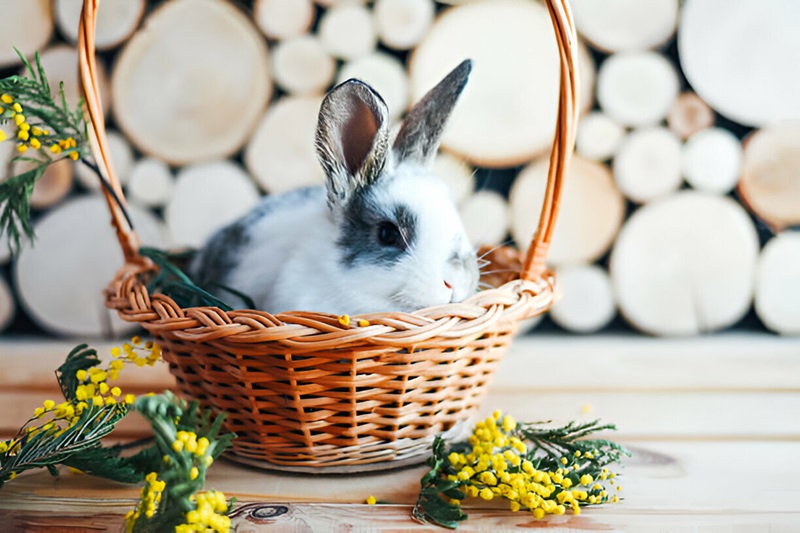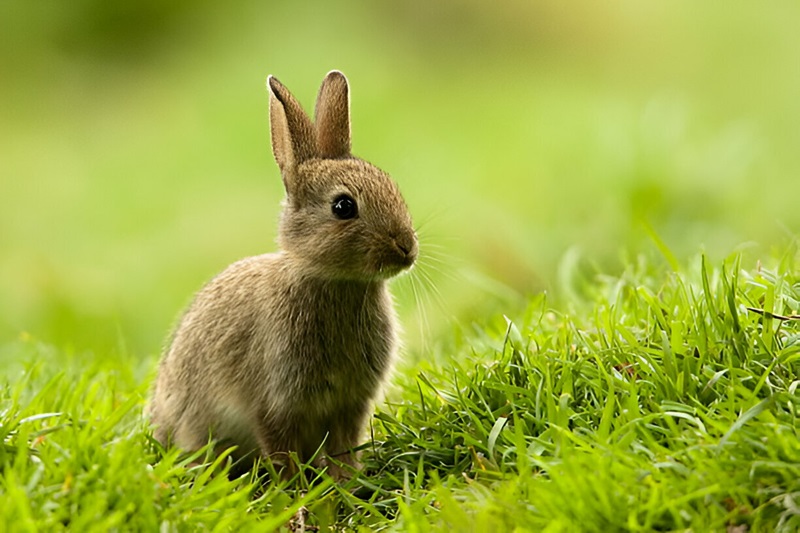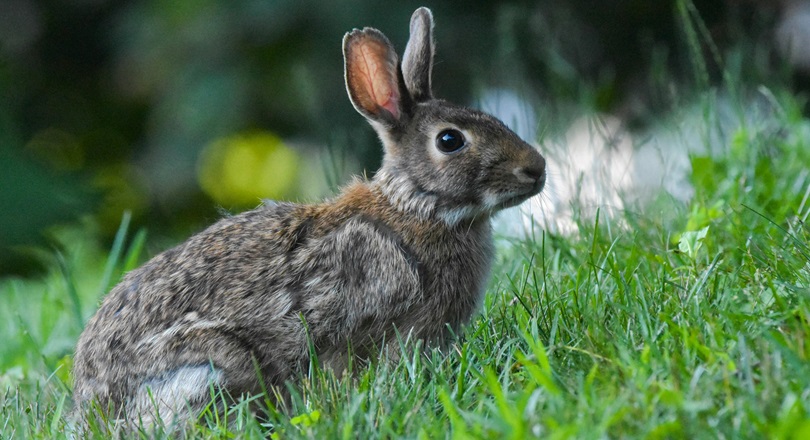Last Updated on February 28, 2025
Rabbits are gentle, social creatures known for their playful behavior and rapid reproduction rates. They thrive in diverse environments.
Rabbits, belonging to the family Leporidae, are small mammals with long ears and strong hind legs. They are known for their keen senses and agility, which help them evade predators. These herbivores primarily feed on grasses, leaves, and vegetables. Rabbits live in groups and establish complex burrows called warrens.
Their social nature makes them popular as pets and subjects of research. Proper care includes a balanced diet, safe housing, and regular veterinary check-ups. Understanding rabbit behavior and needs ensures a healthy and happy life.

The Secret Life Of Rabbits
Rabbits are fascinating creatures with a world beyond our understanding. Their secret lives are full of complex behaviors and social interactions. Let’s dive into the hidden world of rabbits and discover their mysteries.
Social Structures In The Wild
In the wild, rabbits live in groups called warrens. These warrens are complex networks of tunnels. Each warren can house many rabbits. Inside these tunnels, rabbits create separate rooms for different activities.
Rabbits have a strict social hierarchy. Dominant rabbits control access to food and mates. They also decide the sleeping arrangements. Subordinate rabbits follow the rules set by the dominant ones.
Rabbits use their social structures to protect themselves. Living in groups helps them spot predators quickly. They warn each other using specific signals. This teamwork ensures their survival in the wild.
Communication Beyond Human Senses
Rabbits communicate using sounds, scents, and body language. Some of their signals are beyond human senses. They use thumping to warn of danger. A rabbit will thump its hind legs to alert others.
Rabbits also use scent markings to communicate. They have scent glands under their chins and on their feet. These scents help mark territory and identify each other.
Body language is another key part of rabbit communication. They express feelings through ear positions, tail movements, and posture. For example, a rabbit with ears back might be scared or angry.
| Communication Method | Purpose |
|---|---|
| Thumping | Warning of danger |
| Scent marking | Marking territory |
| Body language | Expressing emotions |
Diet And Nutrition: What Fuels Their Hops
Rabbits need a balanced diet to stay healthy. Their diet must include the right nutrients. Fiber, vitamins, and minerals are crucial for their well-being. A good diet helps rabbits hop energetically and live longer.
The Importance Of Fiber
Fiber is vital for a rabbit’s digestive system. It helps keep their gut moving. Without enough fiber, rabbits can get sick. Hay is the best source of fiber for rabbits. Fresh hay should always be available. It also helps wear down their teeth, which grow constantly.
- Hay: Timothy, meadow, and orchard hay are excellent choices.
- Vegetables: Leafy greens like romaine, kale, and parsley.
- Pellets: Choose high-fiber pellets with no added sugars.
Foods To Avoid For A Healthy Bunny
Some foods are harmful to rabbits. Avoid these to keep your rabbit healthy. Sugary and starchy foods can cause digestive problems.
- Chocolate: Toxic to rabbits.
- Dairy products: Rabbits can’t digest them.
- Iceberg lettuce: Contains lactucarium which can be harmful.
- Processed foods: Chips, bread, and cereals are unhealthy.
Stick to natural, fresh foods for a healthy bunny. Always provide fresh water.
| Food | Safe for Rabbits |
|---|---|
| Carrots | Yes, in moderation |
| Broccoli | Yes, small amounts |
| Apple (without seeds) | Yes, in moderation |
| Avocado | No |
| Tomato leaves | No |
By following these guidelines, your rabbit will stay happy and healthy.

Know The Rabbit Behavior
Rabbits are fascinating creatures with unique behaviors. Understanding these behaviors helps in bonding better with your pet rabbit. They communicate in many ways, and knowing these can make your relationship stronger.
Common Misconceptions
Many people think rabbits are low-maintenance pets. This is not true. Rabbits need a lot of care and attention. Another myth is that rabbits don’t show emotions. In reality, rabbits have rich emotional lives.
Some believe rabbits are always happy in cages. But, they need space to hop and explore. Lastly, people think rabbits and guinea pigs can live together. This is a mistake. They have different needs and can harm each other.
Interpreting Bunny Body Language
Rabbits use their bodies to talk. Here are some common signs:
- Thumping: This means they are scared or alert.
- Binky: A jump and twist in the air. It shows they are happy.
- Licking: If a rabbit licks you, it loves you.
- Flattening: Lying flat means they feel safe.
- Teeth Grinding: Soft grinding shows contentment. Loud grinding means pain.
Understanding these signs helps you to know your rabbit’s feelings. This can improve your care for them.
Habitats And Homes
Rabbits need a safe, comfortable place to live. Their habitats and homes are crucial to their health and happiness. Whether indoor or outdoor, each environment has its unique needs.
Creating A Safe Indoor Environment
Creating an indoor space for rabbits involves careful planning. Ensure the area is rabbit-proofed. Hide electrical cords and remove toxic plants. Use a spacious cage or pen. Line the bottom with soft bedding.
Include a litter box. Train your rabbit to use it. Provide hiding spots like cardboard boxes or tunnels. These give your rabbit a sense of security. Offer toys for mental stimulation. Rotate them to keep your rabbit engaged.
Maintain a constant temperature. Avoid drafts and direct sunlight. Keep the environment clean. Remove waste daily. Fresh water and hay should be available at all times.
Outdoor Dwellings: Pros And Cons
Outdoor homes for rabbits can be beneficial. They offer fresh air and natural light. A spacious hutch is essential. It should be predator-proof. Use sturdy materials like metal and wood.
Place the hutch in a shaded area. Rabbits are sensitive to heat. Ensure good ventilation. A wire mesh floor helps with cleanliness. However, include a solid area for rest.
Consider the cons of outdoor living. Weather changes can be harsh. Protect your rabbit from rain and snow. Predators are a constant threat. Secure the hutch firmly.
Regularly check for signs of illness. Outdoor rabbits can be exposed to parasites. Provide fresh food and water daily. Clean the hutch weekly. Regular maintenance is crucial for health.
| Indoor Environment | Outdoor Environment |
|---|---|
| Controlled temperature | Natural light and air |
| Requires rabbit-proofing | Predator-proof hutch needed |
| Easy to monitor health | Exposure to weather |
| Less space needed | More space for exercise |
Health And Wellness
Ensuring the health and wellness of your rabbit is crucial. Healthy rabbits are happy and active. They need regular care and attention. This section explores key aspects of their health.
Regular Check-ups And Vaccinations
Regular check-ups are vital for rabbits. Visit the vet at least once a year. During these visits, the vet checks for any health issues. They will also advise on proper diet and care.
Vaccinations protect rabbits from serious diseases. Common vaccines include those for myxomatosis and RHD. Your vet will provide a vaccination schedule. Ensure your rabbit gets all necessary shots.
Dealing With Common Ailments
Rabbits can suffer from various ailments. Knowing the signs helps in early detection. Common ailments include:
- Gastrointestinal Stasis: Rabbits stop eating and pooping. It is a serious condition.
- Respiratory Infections: Symptoms include sneezing and nasal discharge.
- Dental Problems: Look for drooling and difficulty eating.
If you notice any of these signs, contact your vet immediately. Early treatment can save your rabbit’s life.
| Ailment | Symptoms | Treatment |
|---|---|---|
| Gastrointestinal Stasis | No eating, no pooping, lethargy | Vet care, fluid therapy, medications |
| Respiratory Infections | Sneezing, nasal discharge, lethargy | Antibiotics, supportive care |
| Dental Problems | Drooling, difficulty eating, weight loss | Dental check, trimming teeth |
Maintaining a clean habitat prevents many ailments. Clean your rabbit’s living area regularly. Provide fresh food and water daily. Regular exercise keeps rabbits healthy and happy.
Frequently Asked Questions
What Are the Five Characteristics Of A Rabbit?
Rabbits have long ears and strong hind legs. They possess soft fur and a short, fluffy tail. Rabbits are known for their quick movements and keen sense of smell.
What Is The Personality Of A Bunny?
Bunnies are gentle, curious, and social animals. They enjoy exploring and interacting with their environment. They can be affectionate and bond closely with their owners.
What Are The Natural Behavior Of Rabbits?
Rabbits are social, playful, and curious creatures. They love to dig, chew, and explore their surroundings. They also communicate through body language and enjoy grooming each other.
What Is The Behavior Of A Rabbit?
Rabbits are social, playful, and curious animals. They enjoy exploring, digging, and chewing. They communicate through body language and sounds. Rabbits need companionship and mental stimulation. They are most active at dawn and dusk.
What Do Rabbits Eat?
Rabbits primarily eat hay, fresh vegetables, and a small number of pellets.
How Long Do Rabbits Live?
Rabbits usually live between 8 to 12 years with proper care.
Conclusion
Rabbits are fascinating creatures with unique behaviors and traits. Understanding their nature helps in better care and companionship. These gentle animals bring joy and require proper attention. By learning about their needs, we can ensure their happiness and health. Embrace the charm and wonder of these adorable pets.

